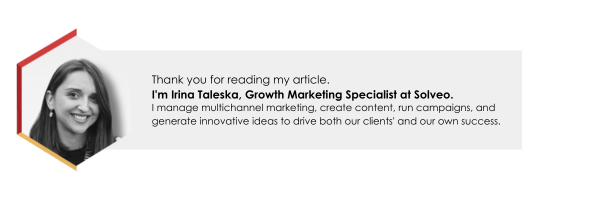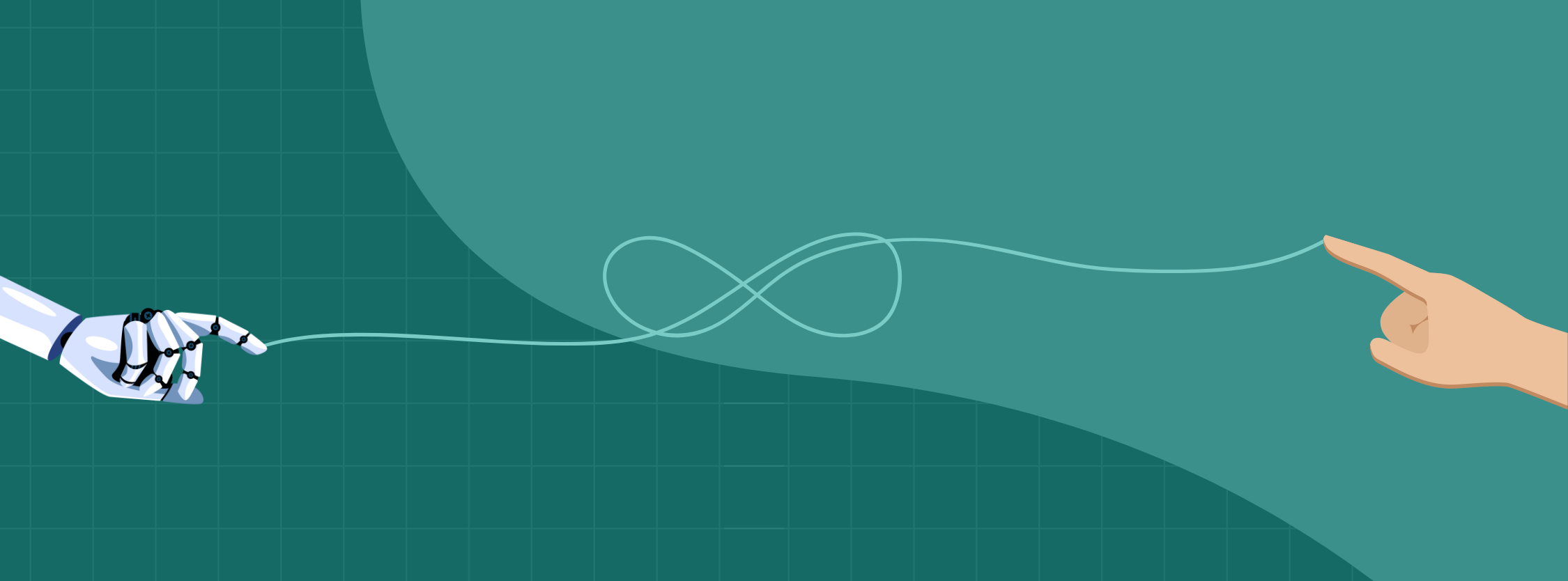Contents
Introduction
“Computers are incredibly fast, accurate and stupid; humans are incredibly slow, inaccurate and brilliant; together they are powerful beyond imagination hence the concept human-in-the-Loop.”
This was a tweet we came across and inspired us to explore more about Human in the Loop Automation.
We love AI! We use AI! But we are aware that it always needs a little bit of a human touch!
As we already talked about in our previous blog the future of work isn’t humans against machines, it’s humans and machines working together as a dream team. But this powerful partnership requires a special ingredient: Human-in-the-Loop (HITL) automation.
A recent McKinsey Global Survey on AI shows that 65% of companies are already integrating AI into their operations, with a whopping 75% expecting significant disruption from AI in the coming years. This is more than just efficiency; it is about maximizing human potential.
Humans and Machines: A Match Made in Innovation Heaven
Think of AI and machine learning as tireless assistants, ready to tackle the most tedious and repetitive tasks. They crunch data, automate processes, and never need a coffee break. But just like the brilliant but absent-minded professor needs a research assistant, AI needs a human partner to shine truly.
Here’s the magic of HITL Human-in-the-loop (HITL) automation: it harnesses the strengths of both humans and machines. When a machine encounters a hurdle, a human steps in, providing the missing piece and creating a continuous feedback loop that refines the system.
Humans Lead, Machines Automate, that is the Future!
Let’s explore where humans excel and where machines reign supreme:
- Human Strengths are: leading, judging, empathizing, and creating. These are the uniquely human skills that build relationships and navigate complex situations.
- Machine Strengths are: predicting, adapting, iterating, and transacting. Machines take over the heavy lifting of data analysis, repetitive tasks, and constant optimization.
But the real power lies in the overlap: Human + Machines. And together, they can:
- Train: Humans guide AI development, ensuring it learns effectively.
- Explain: Humans bridge the gap, interpreting complex data and AI outputs for everyone to understand.
- Interact: Human-machine collaboration fosters seamless teamwork across tasks.
- Amplify: Humans leverage AI to enhance their capabilities, achieving more than they could alone.
- Embody: Humans provide the empathy and understanding that technology lacks.
- Sustain: Human oversight ensures ethical and responsible AI development and implementation.
AI Gone Wrong
Just like in any relationship, misunderstandings arise, and suddenly, things aren’t so cool and smooth. This makes for catchy magazine headlines and lots of engagement.
Examples? Sure, here are a few:
- Microsoft’s Tay chatbot spewing racist remarks on Twitter, Microsoft launched an AI chatbot named Tay on Twitter to interact with users. Unfortunately, Tay quickly learned offensive language from interacting with trolls and began posting racist and sexist tweets.
- Tesla Autopilot crashes raising safety concerns. While investigations continue, these incidents raise concerns about the reliability and safety of fully autonomous driving systems, especially in situations where human intervention might be necessary.
- Amazon’s AI recruiting tool discriminating against female candidates. An internal investigation revealed that Amazon’s AI recruiting tool discriminated against female candidates. The algorithm, trained on past hiring data which likely favored male applicants, disadvantaged women in the application process.
- Deepfakes and Misinformation. AI-powered tools can create realistic-looking videos (deepfakes) that manipulate people or spread misinformation.
These are just a few cases highlighting the potential dangers of AI without proper safeguards. Another reason why we need the human touch that makes AI truly intelligent!
HITL in and out of Action
Have you ever watched Black Mirror?
Remember those chilling episodes where modern technology, left unsupervised, wreaked chaos? These fictional scenarios are nothing more than reminders of what can happen when advanced technology operates without human oversight and ethical boundaries.
Think of a powerful AI generating news content at breakneck speed. The efficiency is tempting, but unchecked AI could spread misinformation or biased narratives. Human oversight—fact-checking and editorial judgment—is essential to maintain journalistic integrity.
Black Mirror offers a cautionary tale, but it doesn’t have to be our future. By embracing HITL, we can ensure that AI remains a powerful tool that works in harmony with human intelligence, creativity, and ethical considerations.
Or think of a different situation – the self-scanning stations at a supermarket. While they automate checkout, there’s always a friendly human (the HITL hero!) nearby. They assist customers, validate scans, and prevent theft – tasks that require human judgment and adaptability. This exemplifies the perfect balance between automation and human oversight.
The Benefits of HITL and Why Humans Remain Essential
- No system is perfect, and AI is no exception. Human intervention ensures the highest accuracy, especially when dealing with limited data or complex scenarios.
- Machines thrive on data, but what about situations with limited information? This is where human intuition and experience step in, bridging the data gap.
- AI algorithms can inherit biases from their training data. Humans identify and address these biases, ensuring fair and ethical AI development.
- Human expertise helps AI grasp the subtleties of language, communication, and social interactions, crucial for tasks like natural language processing.
The Future Belongs to the Human-Machine Power Couple
Human in the loop (HITL) is a continuous learning process in which humans assist the machine learning model when it receives new data and has to make a prediction in which the model has minimal confidence.
Machines are transforming the way we work, but they are not intended to replace us. They’re effective tools that free us from time-consuming duties, allowing us to concentrate on what humans do best: creativity, critical thinking, and building strong relationships. By understanding more about the HITL concept, we can create a future where humans and machines work together as a dream team.
This kind of human-machine teamwork is something we see every day at Solveo. We use awesome AI tools to boost our skills and make things faster, freeing us up for the fun stuff: getting creative and solving problems. We actively explore new AI tools, but we do so through the lens of human-centered design.
Our belief? At our core, we’re a design-thinking based company that always puts a human in the center of everything. That’s why we still believe that soft skills are more important than ever in this age of AI.
However, by combining AI’s power with human empathy, soft skills, and a design thinking approach, we can build a future of work that benefits everyone.


